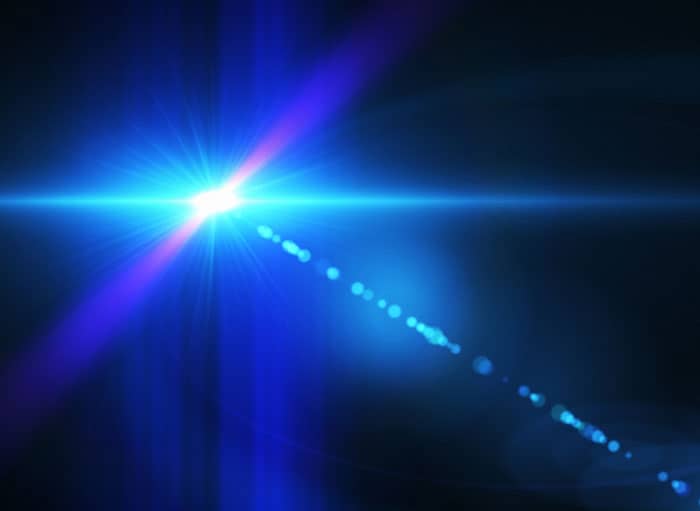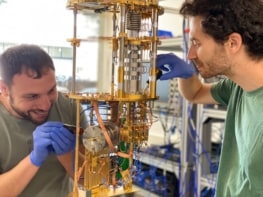
“Molecules” made from three photons have been created by physicists in the US. The photon triplets were made by firing laser light into an atomic gas and the researchers believe that their technique could be useful for creating entangled photons for quantum-information systems.
Normally photons do not interact with each other and therefore will not bind together to form molecule-like structures. But in 2013 Mikhail Lukin at Harvard University and Vladan Vuletić at the Massachusetts Institute of Technology managed to get pairs of photons to stick together by firing a weak laser beam through an ultracold gas of atoms. Now, they have repeated the feat for three photons.
Propagating polariton
Their technique involves the light creating a “Rydberg polariton” in the atomic gas. This is a particle-like collective state in which a highly-excited electron is shared by several atoms. This polariton propagates through the gas like a slow-moving photon with non-zero mass. When it reaches the opposite edge of the gas, the polariton is converted back to light.
The presence of a Rydberg polariton prevents nearby photons from creating their own excitations – a phenomenon called Rydberg blockade. Instead, and under certain conditions, the index of refraction of the gas near the Rydberg polariton is modified such that other photons will bunch-up with the polariton. This is effectively an attractive interaction between photons that creates molecules of light.
In this latest experiment a team led by Vuletić and Lukin observed both pairs and triplets of photons emerging from the atomic gas, rather than the random emission of single photons that would occur if molecules were not forming. They also measured the phase of the photon pairs and triplets and found this to be consistent with an attractive interaction. Indeed, the phase measurements revealed that the photon triplets were more strongly bound than the photon pairs.
Physicists create ‘molecules’ of light
The team is now looking at how it could create repulsive interactions between photons. This, speculates Vuletić, could be used to create a crystalline lattice of light.
The research is described in Science.



